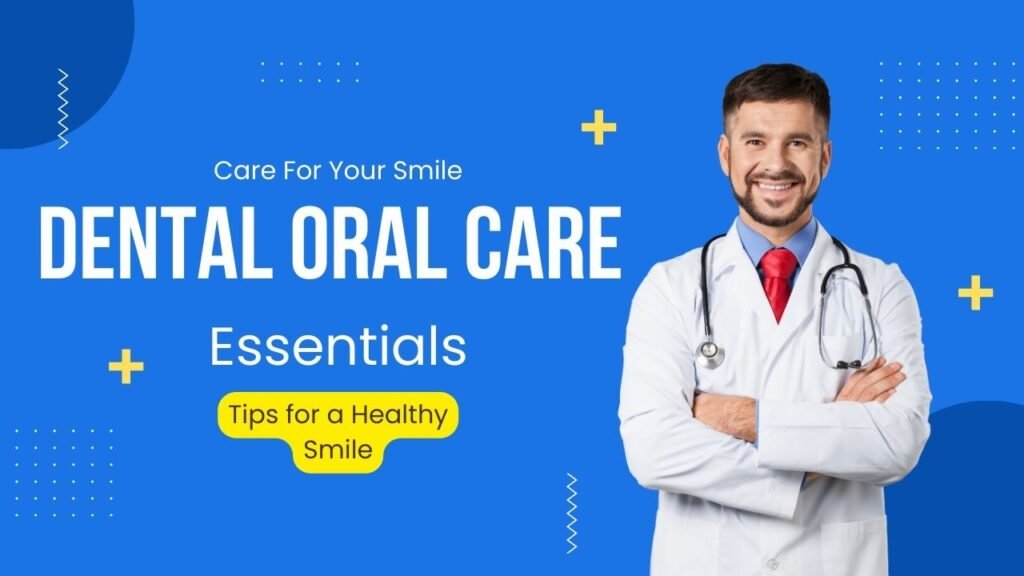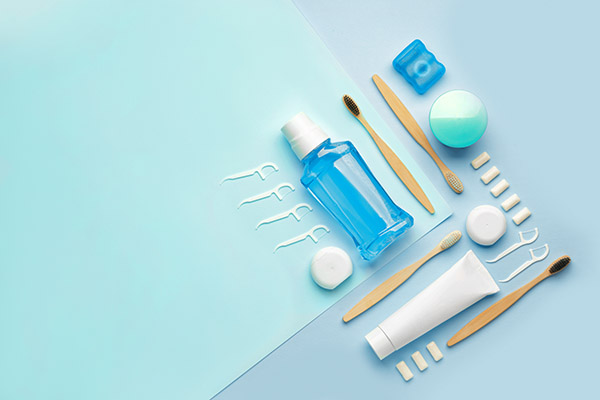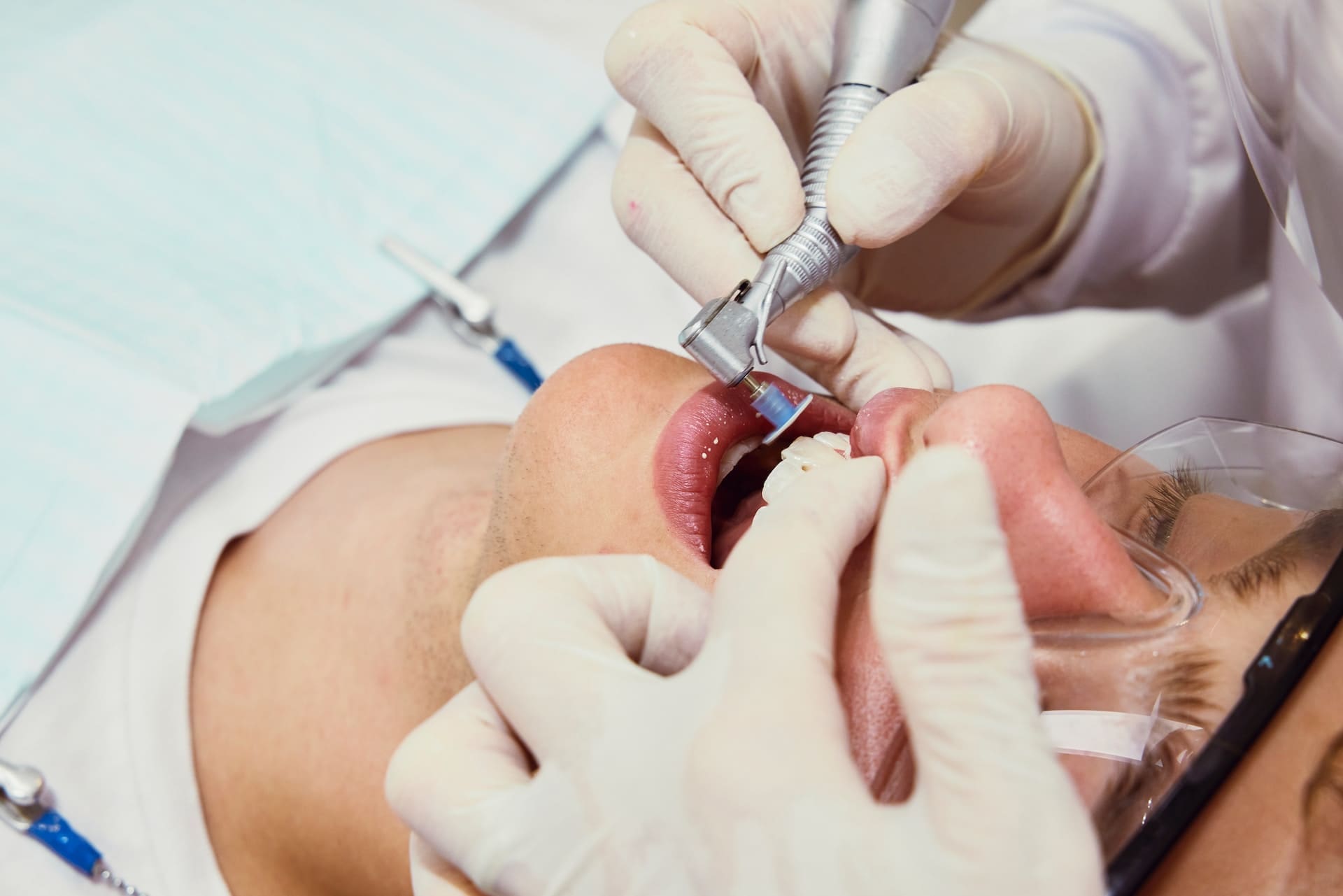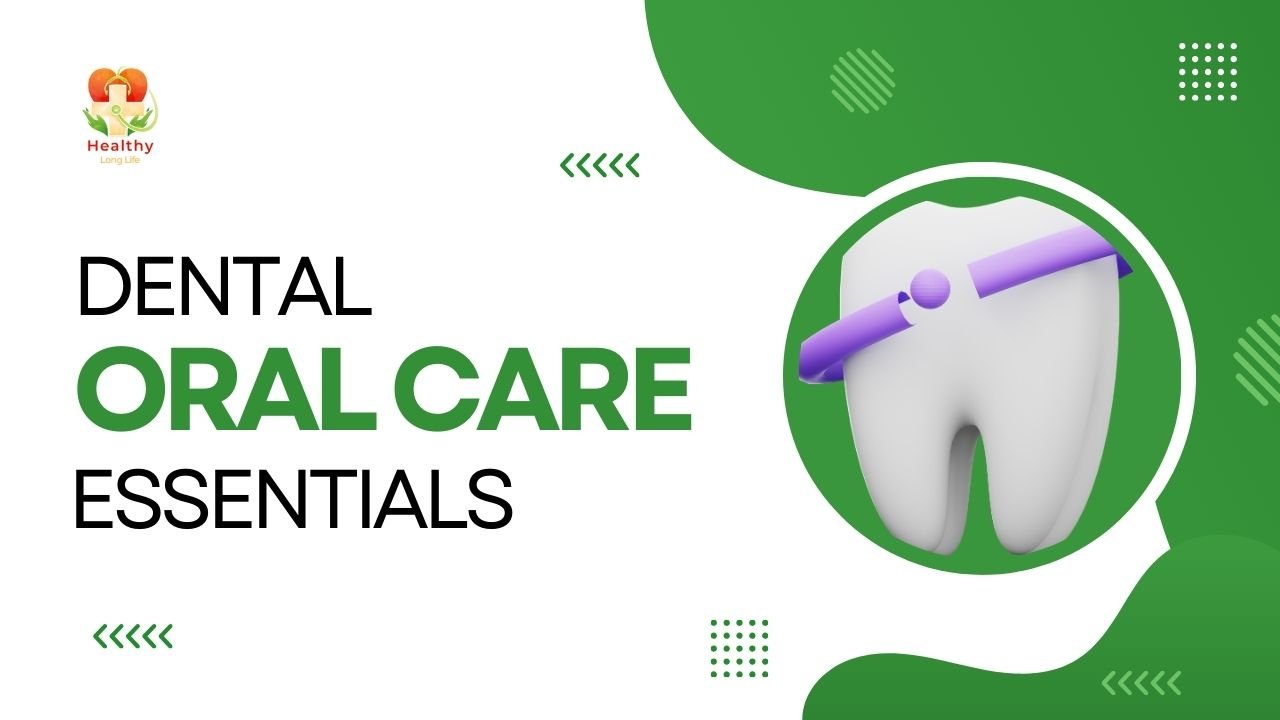
Dental oral care is essential for maintaining healthy teeth and gums. Regular brushing and flossing are the cornerstones of good oral hygiene.
Dental oral care involves a routine that combines both personal and professional methods to prevent dental problems such as cavities, gingivitis, and periodontal disease. It’s imperative to not only practice daily dental care at home but also to visit a dentist regularly for cleanings and checkups.
Optimal oral health contributes to overall wellness, as poor oral hygiene can lead to issues beyond the mouth, including cardiovascular disease. By adopting a comprehensive dental care routine, individuals can ensure that their smile remains bright, their breath fresh, and their oral health is in top condition. Prioritizing regular dental care is a proactive step towards preserving one’s health and preventing future dental issues.
The Importance Of Dental Oral Care
Maintaining a healthy mouth is crucial for overall well-being. Teeth and gums need ongoing attention to prevent problems. Ignoring dental care might lead to pain, tooth loss, and severe health issues. Intense oral routines are the defence line against dental diseases.
Risks Of Neglecting Oral Hygiene
Neglecting your mouth can lead to severe issues:
- Cavities: These are holes that harm your teeth.
- Gum disease: It may start as swollen gums but can harm bones later.
- Bad breath: Caused by bacteria, it can hurt your social life.
- Overall health: Unhealthy mouths may be linked to diabetes and heart disease.
Benefits Of A Committed Dental Care Routine
A good dental routine can yield endless benefits:
- Lower health risks: Healthy teeth reduce the risk of severe health problems.
- Cost-saving: Preventing issues cuts down on expensive treatments.
- Better self-esteem: A bright smile can boost confidence.
- Good oral health supports eating well, which is critical to overall health.

Credit: smilesdental.com
Anatomy Of A Healthy Smile
Think of your smile as a masterpiece. The anatomy of a healthy smile is complex and fascinating. A good smile is not just about white teeth. Solid gums and clean breath play a big part, too. Let’s dive into what makes teeth and gums happy and how to keep dental woes at bay.
Characteristics Of Strong Teeth And Gums
- Enamel quality: The outer layer of your teeth should be tough.
- No cavities: Healthy teeth mean no decay or holes.
- Firm pink gums: Gums should cling tightly around each tooth.
- Bite alignment: Your top and bottom teeth should meet comfortably.
Everyday habits make sure your mouth stays healthy. Brush twice daily. Floss regularly. Use mouthwash.
Common Dental Issues And How To Avoid Them
Let’s prevent dental problems before they start. Here are some tips:
| Dental Issue | Prevention |
|---|---|
| Cavities | Limited sugar intake and regular brushing. |
| Gum Disease | Daily flossing and using mouthwash. |
| Bad Breath | Drinking water and cleaning your tongue. |
Regular dental checkups can catch issues early. Wear a mouthguard when playing sports. Don’t smoke.
Daily Brushing: Techniques And Tools
Welcome to the world of dental oral care, where daily brushing is the foundation of a healthy smile.
Maintaining your pearly whites takes more than just scrubbing away; it requires proper technique and the right tools. Let’s explore how you can upgrade your daily routine to ensure your teeth stay in tip-top shape!
Choosing the Right Toothbrush
Choosing The Right Toothbrush
- Consider bristles hardness: Soft bristles are kind to gums.
- Look for ADA approval on packaging.
- Pick the right size: A small-to-medium head reaches back teeth.
- Think about handle design: It should be comfortable to hold.
- Eco-friendly options? Bamboo toothbrushes are a green choice.
- Electric or manual? Electric toothbrushes can be more effective.
Proper Brushing Methods
Proper Brushing Methods
Mastering the brushing technique is crucial for eliminating plaque without causing harm.
- Brush twice a day, Morning and night, for two minutes.
- Hold your brush at a 45-degree angle to your gums.
- Use gentle, circular motions, not back-and-forth sawing.
- Don’t forget to brush the tongue to remove bacteria.
- Reach every surface: Outside, inside, and chewing surfaces.
The Role Of Flossing In Oral Hygiene
The Role of Flossing in Oral Hygiene:
Imagine finding a hidden treasure in your house. That’s what flossing can be for your teeth! It reaches where your toothbrush can’t, like a super-spy on a secret mission. Brushing is great, but it’s not enough alone. Flossing whisks away the sneaky food bits and plaque hiding between your teeth, guarding you against cavities and gum disease. Ready to become a flossing superstar? Let’s uncover the treasure of clean and healthy teeth one string at a time!
Finding The Right Floss For Your Teeth
Choosing your floss is like picking your favourite ice cream flavour. There’s something for everyone!
- Waxed & Unwaxed: Glide between teeth like a snowboarder with waxed floss, or go natural with unwaxed floss.
- Dental Tape: Got a little more space? Dental tape is like a comfy blanket for wider gaps.
- Floss Picks: On the go? Grab a floss pick for quick clean-ups.
Flossing Techniques For Maximum Effectiveness
Floss like a pro with these simple steps:
- Break Off: Start with 18 inches of floss. Wind most around one middle finger – the rest around the other middle finger.
- Guide with Thumbs: Use thumbs to steer the floss between your top teeth with gentle care.
- Glide Gently: Smoothly curve the floss around each tooth base. Slide up and down against the tooth and under the gumline.
- New Section: Unroll a fresh floss section for each tooth to avoid re-depositing the plaque.
Remember, gentleness is key—don’t snap the floss or be too rough. It’s about being kind to your gums. Say goodbye to pesky plaque and hello to a breathtaking smile every day!
Mouthwash And Oral Rinses: A Liquid Shield
Imagine a liquid warrior who battles germs with every swish and gargle. Mouthwash and oral rinses serve as this protector in daily dental care. They reach where toothbrushes and floss might miss, making them a crucial player in the fight for complete oral hygiene. Ready to dive into the world of mouthwashes? Let’s explore the types available and learn the proper rinsing technique.
Types Of Mouthwash
Not all mouthwashes are the same; each type has a unique role. Here’s a quick rundown:
- Fluoride Rinses: These help strengthen teeth and prevent decay.
- Antiseptic Mouthwashes: Loaded with antibacterial ingredients, they fight bacteria that cause bad breath and infections.
- Cosmetic Mouthwashes: They temporarily control bad breath and leave your mouth with a pleasant taste.
- Natural Mouthwashes: These are free from chemicals and rely on natural ingredients for their benefits.
The Correct Way To Rinse
Now, let’s master the art of rinsing.
- Pour 20 mL of mouthwash; that’s about four teaspoons.
- Empty it into your mouth; don’t dilute it with water.
- Swish vigorously for 30 seconds.
- Gargle, ensuring the back of the throat is reached.
- Spit out the mouthwash; do not swallow.
Please wait 30 minutes before eating or drinking. This allows the mouthwash’s ingredients to work their magic without interruption.
Diet And Nutrition: Eating For Oral Health
Teeth need the right foods, just like the rest of our body. A diet rich in vitamins and minerals keeps teeth and gums strong. This section guides you through foods that protect and strengthen your oral health.
Best Foods For Strong Teeth And Gums
Choose foods that fortify enamel and nurture gum health. Here’s a list:
- Calcium-rich foods like milk, cheese, and yoghurt help teeth stay strong.
- Crunchy fruits and vegetables such as apples and carrots clean teeth naturally.
- Leafy greens are packed with vitamins for gum health.
- Almonds offer good fats and minerals to support tooth structure.
- Phosphorus-rich foods, like fish and eggs, aid in repairing tooth enamel.
Foods And Habits To Avoid
Some foods and habits can harm your teeth. Here’s what to keep off your plate:
| Sugary Snacks and Drinks | Starchy Foods | Harmful Habits |
|---|---|---|
| Candy, soda, and pastries | Bread, chips, and pasta | Smoking and nail-biting |
Avoid lingering sips of sugary drinks and constant snacking. Both can lead to cavities. Sticky and starchy foods can cling to teeth and promote decay.
Regular brushing and flossing are essential after meals.
Professional Dental Care: Regular Checkups
Taking care of your teeth is like caring for a precious gem. Regular dental checkups are pivotal. They maintain your smile’s sparkle. Dentists catch problems before they grow. Cleanings rid your mouth of silent threats. To keep that gleaming smile, visiting your dentist is non-negotiable.
The Significance Of Dental Examinations And Cleanings
Biannual dental exams and cleanings do more than polish your teeth. They prevent decay and gum disease. During these visits, dentists look for signs that are not visible to you. They might spot issues like cavities, gingivitis, or oral cancers early on. This gives you the best chance for successful treatments.
- Spot Early Signs: Catching problems early can save teeth.
- Prevent Gum Disease: Cleanings ward off harmful bacteria.
- Save Money: Early treatment reduces costly procedures later.
- Fresh Breath: Regular cleaning keeps your breath smelling good.
When To Seek Treatment From A Dental Professional
Teeth send signals when they need professional help. Please don’t ignore them! Pain, sensitivity to temperatures, or swelling are urgent signs. Visit your dentist immediately if you notice any of these. They are here to help, not intimidate. Early treatment often means simple, less invasive care.
| Sign | Action |
|---|---|
| Toothache | Book an appointment ASAP. |
| Swollen Gums | See your dentist soon. |
| Sensitivity | Discuss with your dentist. |
| Broken Tooth | Rush to dental care. |

Credit: lexingtoncosmeticdentistry.com
Advancements In Dental Care Products
The dental care industry is constantly evolving with cutting-edge products designed to enhance our oral hygiene routine. These advancements not only promote healthier teeth and gums but also encourage a more efficient and enjoyable dental care experience. Let’s delve into some of the latest innovations that are changing the way we maintain our oral health right at home.
Innovative Tools For Home Dental Care
Taking care of your teeth at home has never been more advanced. New tools combine technology with ease of use to boost our daily routines.
- Smart Toothbrushes: Equipped with sensors and Bluetooth connectivity, they offer personalized feedback.
- Water Flossers Use powerful jets of water to remove plaque and debris between teeth. They are suitable for those with braces.
- LED Whitening Kits: Enhance your smile with safe and effective teeth whitening right from your couch.
These tools are not just clean; they track and improve dental health over time.
Evaluating The Latest Dental Gadgets
With a plethora of gadgets on the market, it’s crucial to assess their effectiveness and value.
| Gadget | Function | User Experience | Overall Rating |
|---|---|---|---|
| Ultrasonic Plaque Remover | Destroys plaque at a microscopic level | Easy to use, minimal discomfort | 4.5/5 |
| Tongue Scrapers with Sensors | Monitors and analyzes breath quality | Straightforward, interactive | 4/5 |
Online reviews and clinical research can guide us toward informed choices. Products should also fit individual needs and lifestyles for maximum benefit.
Emergency Dental Care: Being Prepared
Dental emergencies can strike at any moment. Quick thinking and staying calm are crucial to managing such situations. Preparing for these unexpected events ensures swift action and can help prevent further complications. Below, exploring common dental emergencies and how to create a dental first-aid kit will set the stage for effective emergency dental care.
Common Dental Emergencies
- Chipped or Broken Tooth: Save any pieces. Rinse the mouth using warm water; rinse any broken pieces.
- Toothache: Cleanse the mouth with warm water. Gently use dental floss to remove any trapped food.
- Knocked-Out Tooth: Retrieve the tooth, hold it by the crown, and rinse the root if it’s dirty. Attempt to reinsert it in the socket or store it in milk.
- Lost Filling or Crown: Save the crown. If possible, slip it back over the tooth using dental cement, denture adhesive, or toothpaste.
- Objects Caught Between Teeth: Use dental floss only. If unsuccessful, visit a dentist.
- Broken Braces Wires: If a wire breaks or sticks out, cover the end with orthodontic wax, cotton, or gum until a dentist can fix it.
- Abscess: An infection that occurs around the root of a tooth or in the space between teeth. Immediate treatment is crucial.
Creating A Dental First-aid Kit
Being equipped with a dental first-aid kit can be a game-changer during dental emergencies. Here’s what to include:
| Item | Use |
|---|---|
| Sterile Gauze | To control bleeding or clean injuries. |
| Dental Floss | For removing objects stuck between teeth. |
| Saline Solution | To rinse the mouth or store a knocked-out tooth. |
| Small Container with Lid | To safely transport a knocked-out tooth. |
| Dental Cement | Temporary fix for lost fillings or crowns. |
| Orthodontic Wax | To cover sharp wires from braces. |
| Disposable Gloves | For hygiene and to prevent contamination. |
| Ice Pack | To reduce swelling and alleviate pain. |
| Pain Relievers | For pain management, use as directed. |
Boldly face dental emergencies by preparing with knowledge and the right tools. A well-stocked dental first-aid kit can save the day, providing temporary relief until professional care is available.

Credit: www.community-healthnet.com
Myths Vs. Facts: Debunking Oral Health Misconceptions
Let’s explore the world of oral health, where myth often blurs the line of fact. Our journey will unravel truths vital to our smiles. Myths float around like bubbles, seeming harmless yet potentially problematic when they burst. Proper dental oral care falls prey to many such myths, leading many astray in their daily routines. Unveiling the facts lays the foundation for stronger, healthier teeth. Join us as we debunk some of the most common oral health misconceptions.
Debunking Common Oral Health Myths
Common misconceptions about oral health can steer people away from best practices. Let’s set the record straight:
- Myth: Sugar is the sole culprit for cavities. Fact: While sugar plays a role, it’s actually the acid produced by bacteria in our mouths that leads to cavities.
- Myth: Brushing harder cleans better. Fact: Gentle, proper brushing techniques protect enamel and gum health.
- Myth: Flossing isn’t essential if you brush well. Fact: Flossing reaches areas your brush can’t, preventing decay and gum disease.
- Myth: If gums bleed, it’s best to stop flossing. Fact: Bleeding can indicate inflammation and the need for more diligent flossing and brushing.
- Myth: Chewing gum can replace brushing. Fact: While sugar-free gum can boost saliva and dislodge food, it’s not a substitute for brushing.
Trusted Sources For Oral Health Information
Reliable information ensures you take proper care of your teeth. Look for these trusted sources:
- Dental professionals, such as dentists and dental hygienists.
- Reputable health organizations’ online portals, like the ADA (American Dental Association).
- Peer-reviewed dental journals and publications.
- Educational websites dedicated to dental health.
- Government health departments and their resources.
Always verify tips and facts with these experts and resources to keep your oral health on the right track.
Frequently Asked Questions On Dental Oral Care
What Is Oral And Dental Care?
Oral and dental care involves maintaining healthy teeth and gums through regular brushing, flossing, and dental checkups. It prevents tooth decay, gum disease, and other mouth-related issues.
What Are The 5 Proper Steps For Oral Care?
1. Brush your teeth twice daily using fluoride toothpaste. 2. Floss every day to remove plaque between teeth. 3. Rinse with an antiseptic mouthwash to kill bacteria. 4. Eat a balanced diet and limit sugary snacks. 5. Visit your dentist regularly for checkups and cleanings.
What Is Proper Oral Care?
Proper oral care involves brushing twice daily, flossing regularly, rinsing with mouthwash, eating a balanced diet, and visiting the dentist routinely for checkups and cleanings.
What Does Oral In Care Include?
Oral care includes regular brushing, flossing, mouthwash use, and dental checkups. It involves maintaining gum health, preventing tooth decay, and ensuring fresh breath.
Conclusion
Maintaining a healthy smile is a lifelong journey. Prioritize your dental oral care routine for lasting benefits. Regular checkups, consistent hygiene practices, and mindful eating habits are keys to a vibrant smile. Start today, and your future self will thank you for a bright and healthy dental life.
Embrace the power of a confident, beautiful smile.

I am a blogger for holistic wellness & longevity. With a passion for nutrition, fitness, & mindfulness, I’m dedicated to sharing insights on healthy living. Join my journey towards a vibrant life with practical tips & evidence-based advice. Embrace vitality and thrive with me!

